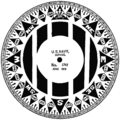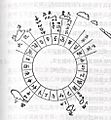Northwest facts for kids
Northwest is a direction that is exactly halfway between North and West on a compass. Imagine a circle divided into four main directions: North, East, South, and West. Northwest is one of the four "intercardinal" or "intermediate" directions, meaning it's in between the main ones. It is directly opposite to Southeast. Knowing these directions helps people find their way around, whether they are exploring new places or reading a map.
Contents
Understanding Northwest
Northwest is a very important direction, especially for navigation and geography. When you look at a map, North is usually at the top. If you then look towards the left side, that's West. Northwest is the angle exactly between these two. It can also be written as NW.
How Compasses Work
A compass is a tool that helps you find directions. It has a needle that always points to magnetic north. From there, you can figure out all the other directions. If you face North, then turn a quarter of the way to your left, you are facing West. If you turn just half of that quarter, you are facing Northwest. This is about 315 degrees if you measure clockwise from North (which is 0 or 360 degrees).
Northwest in Geography
Many places around the world use "Northwest" in their names to describe their location. For example, there are regions like the Pacific Northwest in the United States, which is known for its unique climate and landscapes. There are also countries or areas that might be described as being in the "northwest" part of a continent. This helps people quickly understand where a place is located on a map or globe.
- Pacific Northwest: This region in North America includes parts of the U.S. states of Oregon, Washington, and Idaho, and the Canadian province of British Columbia. It's famous for its forests and rainy weather.
- Northwest Territories: This is a large area in northern Canada. It is known for its vast wilderness, cold climate, and unique wildlife.
Why Directions Matter
Understanding directions like Northwest is crucial for many reasons.
- Travel: When you are traveling, especially without GPS, knowing directions helps you follow maps and reach your destination. Sailors and pilots rely heavily on precise directions.
- Weather: Weather patterns often move from certain directions. For example, a weather forecast might say "winds from the Northwest," which tells you where the air is coming from.
- Building and Planning: Architects and city planners consider directions when designing buildings and cities. They might want to maximize sunlight from the south or protect against strong winds from the northwest.
Knowing about directions like Northwest helps us understand our world better, from navigating a ship across an ocean to simply finding our way to a friend's house.
Images for kids




